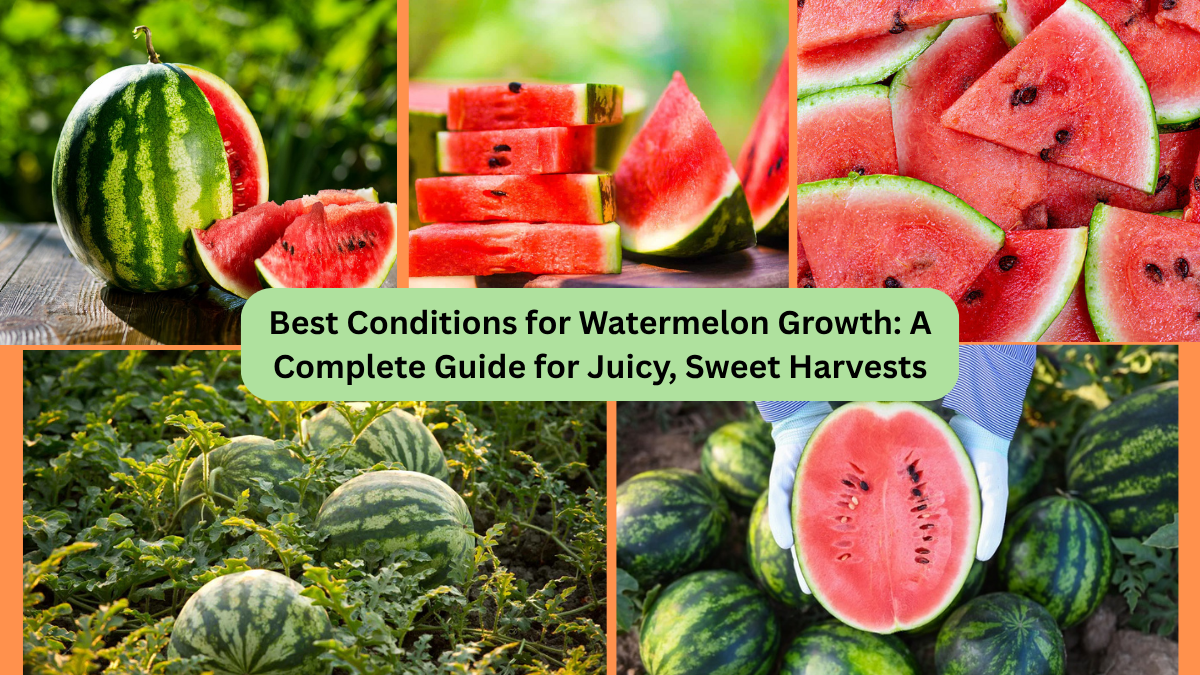Watermelons are one of summer’s most beloved fruits — crisp, juicy, and refreshingly sweet. While they’re often grown on sprawling farms, many gardeners successfully cultivate them in home gardens and even in containers. But like any crop, watermelons thrive best under specific conditions. If you want to grow large, flavorful, and healthy melons, you need to give them the environment they love.
In this detailed guide, we’ll explain the best conditions for watermelon growth, covering everything from temperature and soil type to watering, sunlight, and spacing. Whether you’re planting in a backyard, raised bed, or patio container, following these tips will dramatically improve your harvest.
Why It’s Important to Get Conditions Right
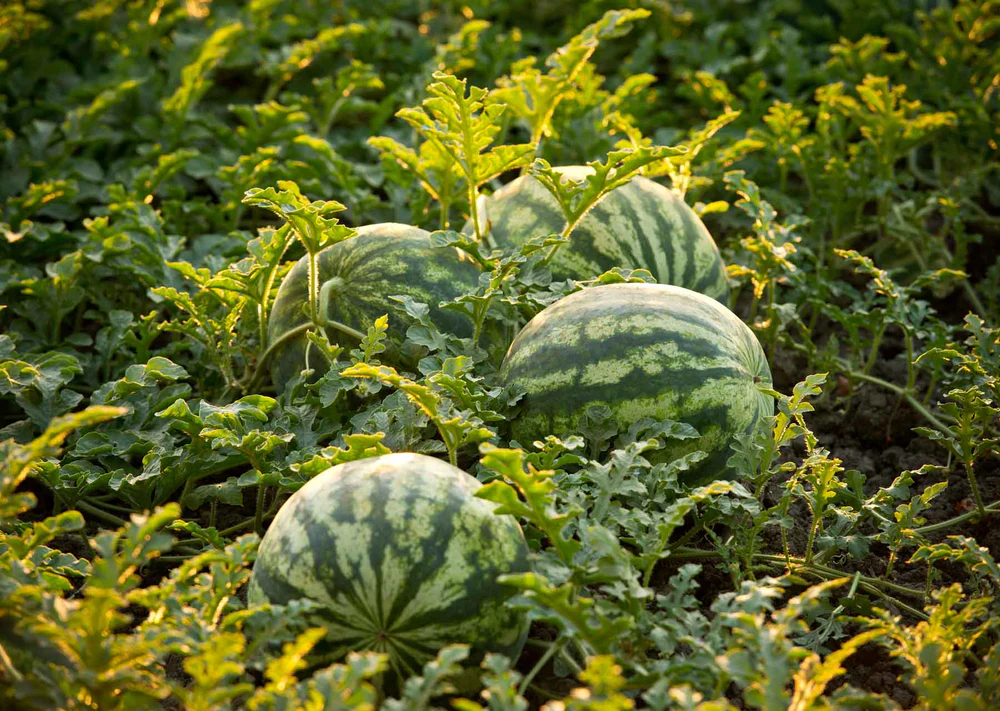
Watermelons have particular growing needs. If you miss one essential element — whether it’s soil pH, sunlight, or watering — you might end up with small, bland, or stunted fruits. Providing the right environment ensures:
- Faster plant growth
- Larger, sweeter melons
- Fewer pest and disease issues
- A higher overall yield
Let’s break down the ideal conditions for growing perfect watermelons.
Best Time of Year for Planting
Watermelons are warm-season plants that need consistently warm temperatures to germinate, grow, and produce fruit.
Ideal planting time:
- After the last frost date in your region
- When daytime temperatures are consistently above 70°F (21°C)
- Soil temperature should reach at least 65–70°F (18–21°C) for seeds to germinate properly
In most regions, this falls between late spring and early summer.
Sunlight Requirements
Watermelons are sun-loving plants that need full, direct sunlight to thrive.
Ideal conditions:
- Minimum 6–8 hours of direct sunlight per day
- 10+ hours is even better for sweeter fruits
- Choose an open, unobstructed area away from tall trees and buildings
Insufficient sunlight will result in weak vines, poor flowering, and bland or undersized fruits.
Best Soil Type for Watermelons

Soil is a critical factor in watermelon cultivation. These plants prefer loose, well-draining, sandy loam soil that’s rich in organic matter.
Ideal soil conditions:
- Light and loose texture for easy root growth
- Rich in nutrients (compost and aged manure improve fertility)
- Excellent drainage to prevent waterlogging and root rot
Soil pH:
Watermelons thrive in slightly acidic to neutral soils with a pH of 6.0 to 6.8.
Tip: Test your soil’s pH using a home kit and amend with lime (to raise pH) or sulfur (to lower pH) if necessary.
Watering Requirements
Watermelons need consistent moisture throughout their growing season but don’t tolerate waterlogged conditions.
Watering tips:
- Keep soil evenly moist, especially during germination and early vine growth
- Water deeply 1–2 times per week, depending on rainfall and temperature
- Use drip irrigation or a soaker hose to water at the base and avoid wetting leaves
- Reduce watering as fruits mature to enhance sugar concentration and sweetness
Important: Avoid overhead watering to prevent fungal diseases like powdery mildew.
Temperature Requirements
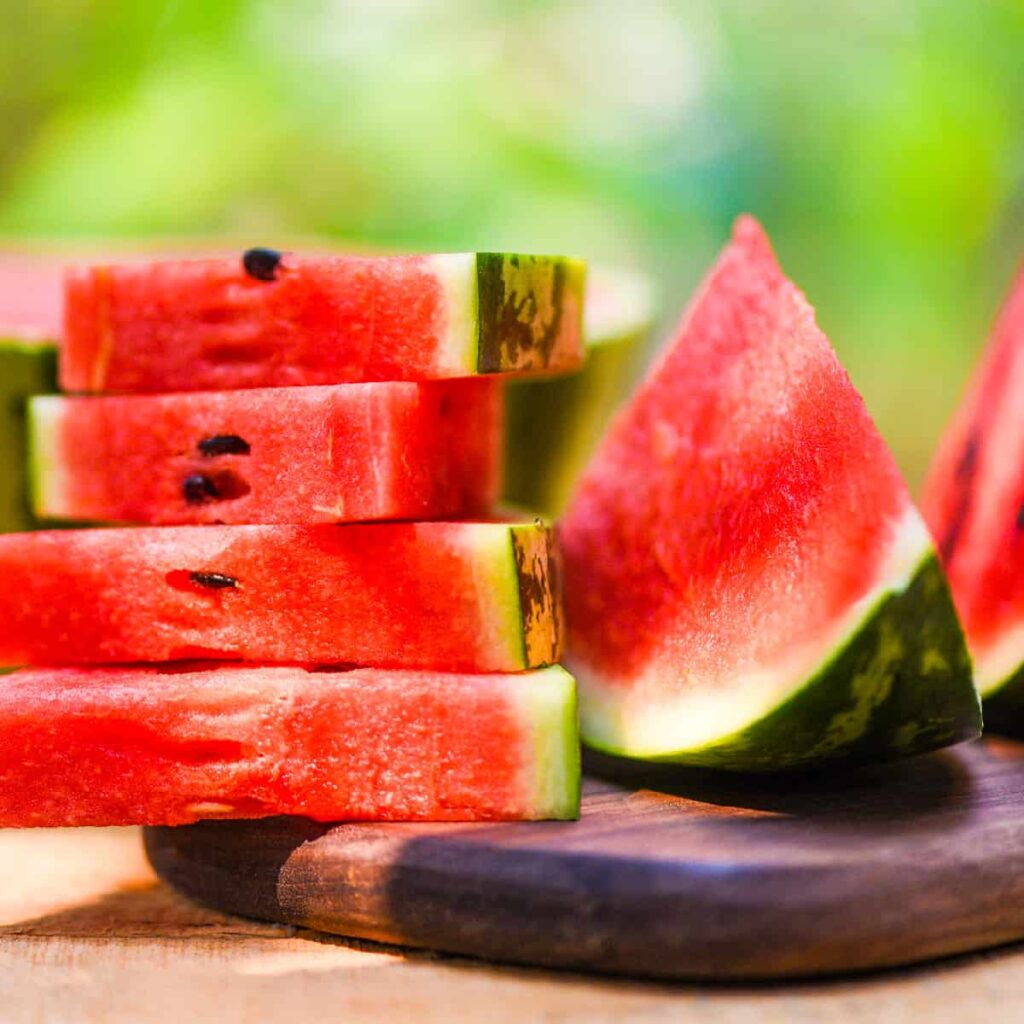
Being a heat-loving crop, watermelons flourish in warm temperatures.
Optimal temperature ranges:
- Germination: 70–95°F (21–35°C)
- Growing season: 70–90°F (21–32°C)
- Nighttime temperatures should stay above 60°F (16°C)
Tip: Use black plastic mulch to warm soil in cooler regions and accelerate plant growth.
Plant Spacing and Arrangement
Watermelon vines need ample room to spread for good air circulation, sunlight exposure, and healthy fruit development.
Spacing guidelines:
- Direct in-ground planting: Space hills 3–5 feet apart, rows 6–8 feet apart
- Bush/dwarf varieties: Can be spaced closer at 2–3 feet apart
- In containers: Use a 5–15 gallon container per plant with a strong trellis or let vines sprawl freely
Tip: Prune excess runners for better air circulation and to focus energy on fewer, larger fruits.
Mulching for Healthier Growth
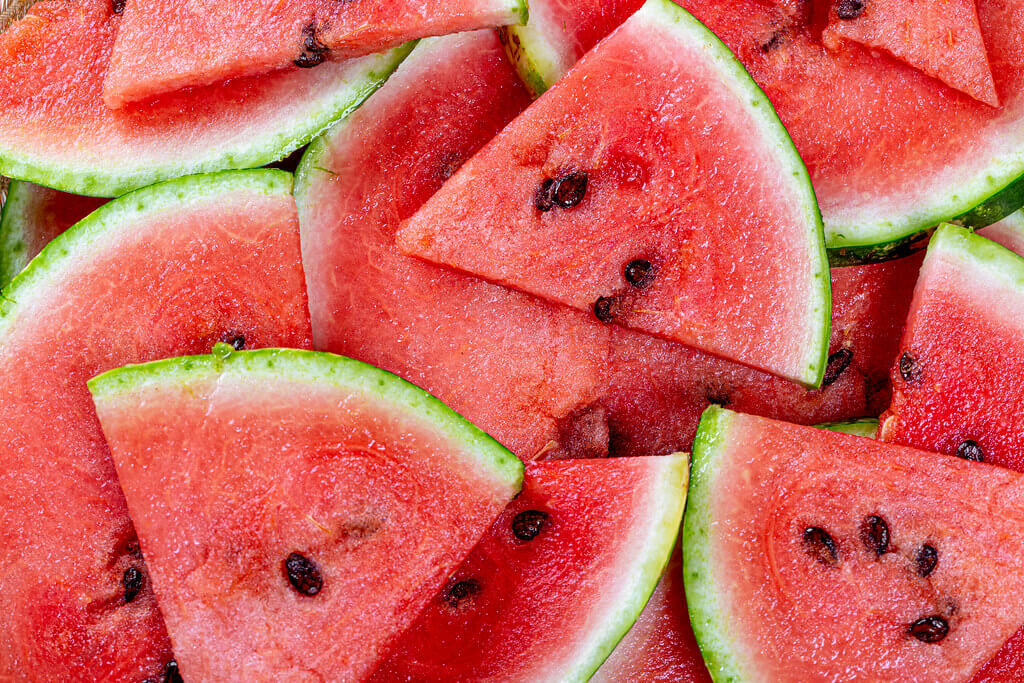
Mulching offers several benefits to watermelon plants:
- Retains soil moisture
- Regulates soil temperature
- Prevents weed growth
- Keeps developing fruits off damp soil to reduce rot risk
Best mulching options:
- Straw
- Grass clippings
- Black plastic mulch
Organic mulches like straw also gradually decompose, adding nutrients to the soil.
Fertilizer Needs
Watermelons are heavy feeders and need ample nutrients throughout their life cycle.
Fertilizing tips:
- At planting: Mix in a balanced organic fertilizer or compost
- Early growth: Use a high-nitrogen fertilizer for vine and leaf development
- At flowering: Switch to a fertilizer rich in phosphorus and potassium to support blooming and fruiting
Recommended schedule: Feed every 2–3 weeks or as per fertilizer instructions.
Pro tip: Avoid over-fertilizing with nitrogen during fruiting stages, or you’ll get lush vines and few melons.
Common Pests and Diseases
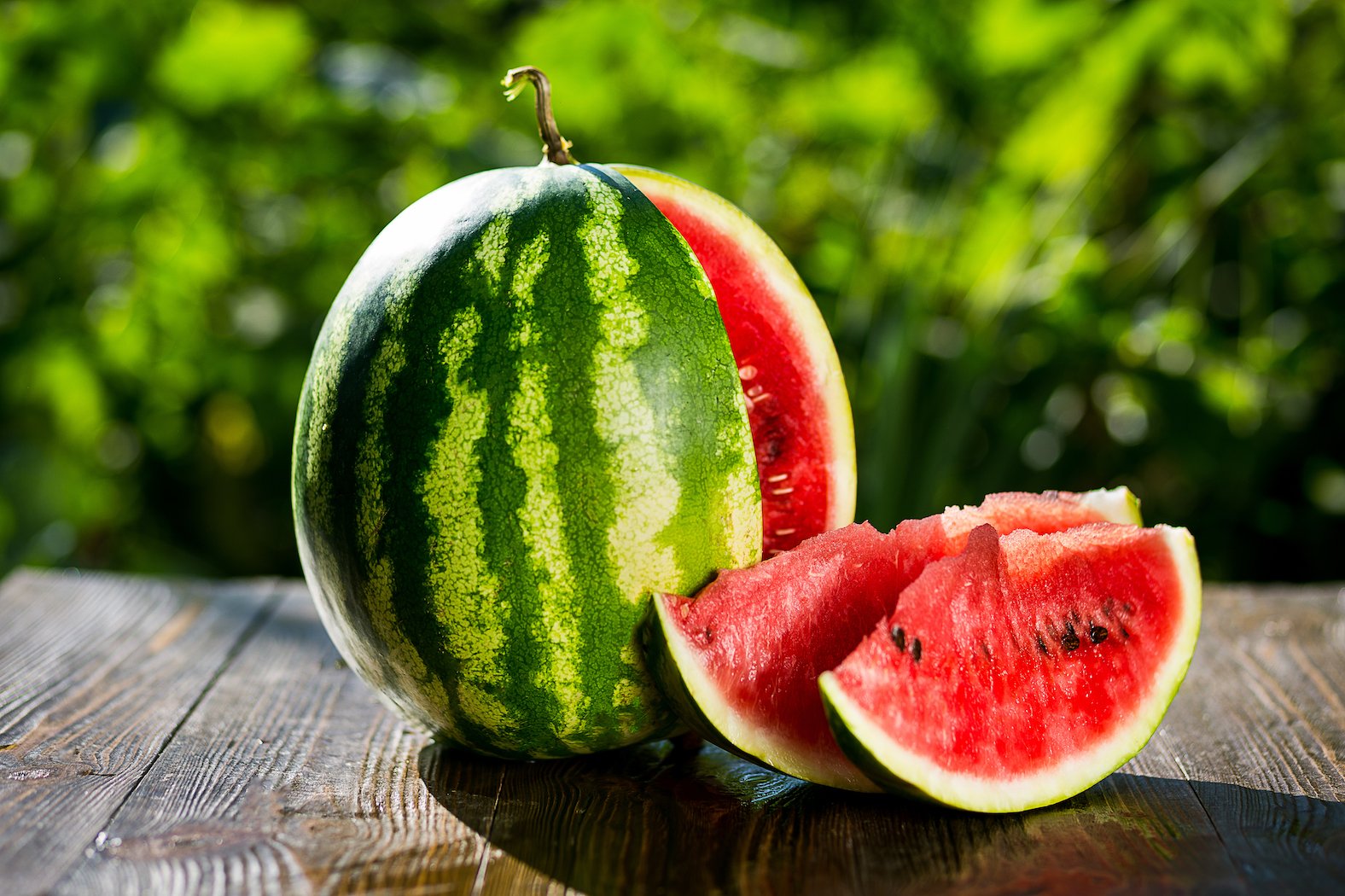
Watermelons can be affected by pests and diseases if not managed properly.
Common pests:
- Aphids
- Cucumber beetles
- Squash bugs
- Spider mites
Diseases to watch for:
- Powdery mildew
- Downy mildew
- Fusarium wilt
Preventive care:
- Maintain good air circulation
- Avoid overhead watering
- Use insecticidal soap or neem oil for pest control
- Remove infected leaves promptly
Crop rotation and disease-resistant varieties help reduce problems.
Signs of Ripe Watermelons
To enjoy a sweet harvest, it’s crucial to know when your watermelons are ready to pick.
Ripe watermelon indicators:
- Tendril nearest the fruit turns brown and dry
- Ground spot where the melon touches soil turns creamy yellow
- Rind changes from shiny to dull
- A deep, hollow sound when tapped
Most watermelon varieties are ready 70–100 days after planting.
Storage and Enjoying Your Harvest
Freshly harvested watermelons:
- Can be stored at room temperature for up to 7 days
- Last 2–3 weeks in a refrigerator
Once cut, store in the fridge, wrapped, and consume within a few days.
Use your homegrown melons:
- As chilled slices
- In fruit salads
- Blended into smoothies
- Frozen for summer treats
Final Thoughts
Growing watermelons successfully comes down to providing the right conditions — warm temperatures, abundant sunlight, loose and fertile soil, consistent watering, and plenty of space. Whether you’re working with a backyard garden, raised beds, or large containers, following these guidelines will help you grow healthy, juicy, and sweet watermelons.
Start with a reliable variety, prepare your soil, and be patient — soon you’ll be enjoying the refreshing taste of homegrown watermelons on hot summer days.
